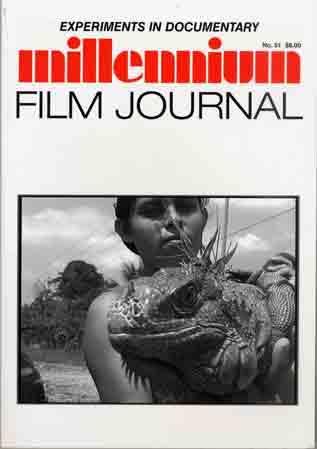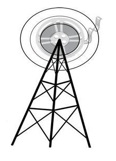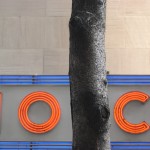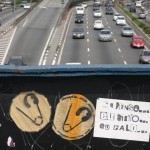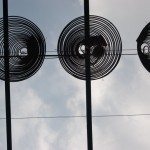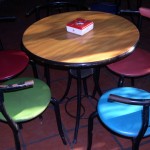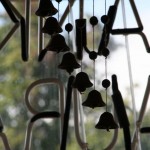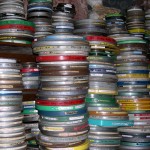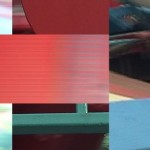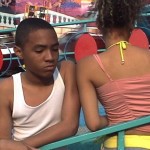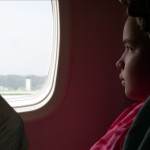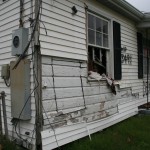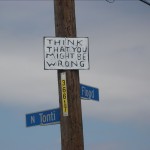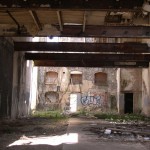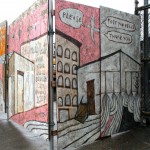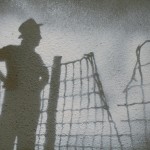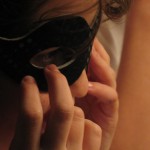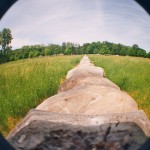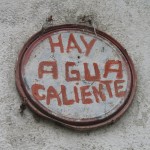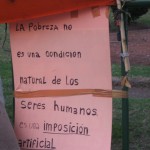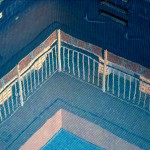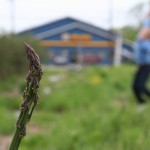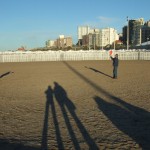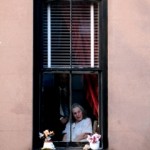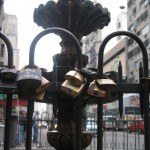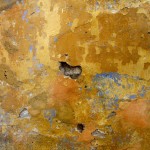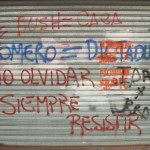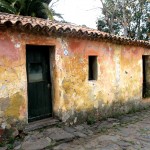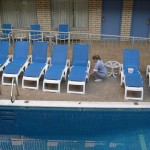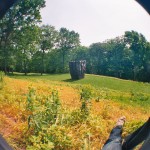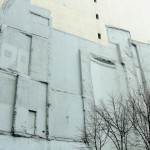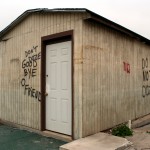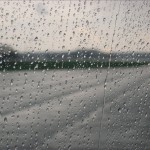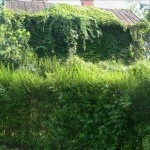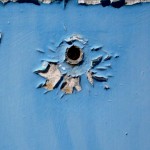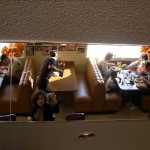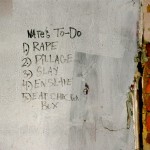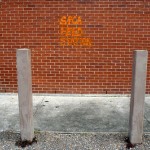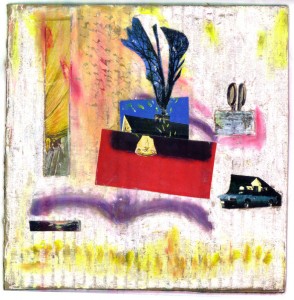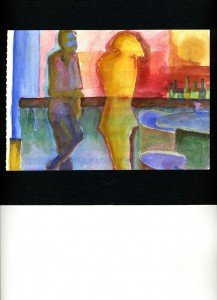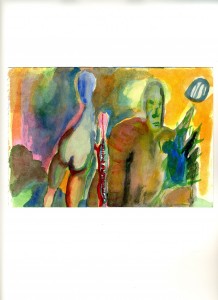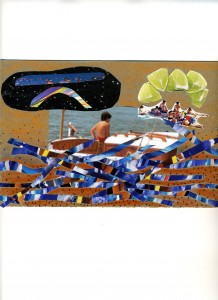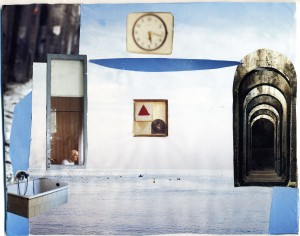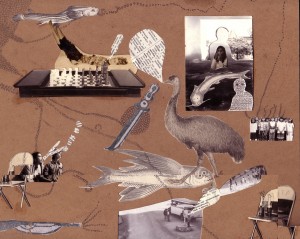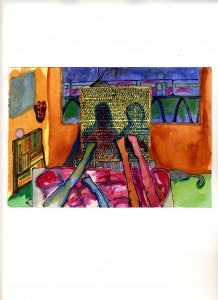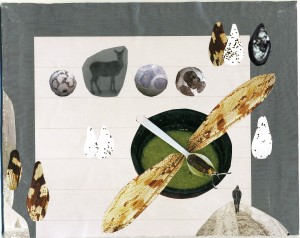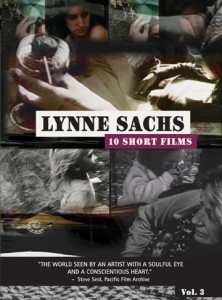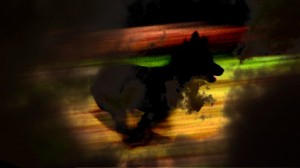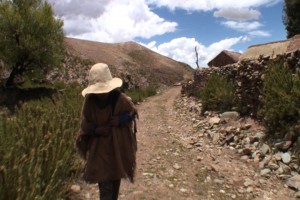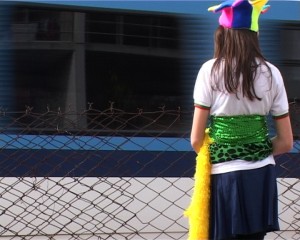Media Mavericks:
a critical examination of experimental film and video
Lynne Sachs
Tuesdays 9:30 – 12:15 Fall ‘09 H56.1002.01 Room #109, Tisch Building,NYU
This semester in Media Mavericks we will explore the experimental media work that has emerged in the realm of the documentary. In our discussion of this movement in film and video, we will consider how the practice of working with reality can be challenged, even transported, by the aesthetic freedom that comes with alternative modes of visual expression. Your teacher, Lynne Sachs, was the co-editor of the Millennium Film Journal #51 Summer 2009 issue on “Experiments in Documentary”. This journal offers the public a compilation of writings by and about media artists who are constantly creating their own signature modes of production as well as their own language of cinema. Through our reading of these texts, we will contemplate how these artists use: first person subjectivity, political manifesto, reenactments, or even visual poetry on the act of seeing. This journal will form the core of our reading for the class, with an additional package of articles in a class reader. Lynne will have the journals during the first two weeks of class for you to purchase.
As artists who are looking for your own cinematic way of working, you will discover a series of formally innovative ways of working, including: found footage, installation, re-enactment, home movies, text as image and more. Over the course of the semester, several visiting artists who were contributors to Lynne’s issue of the MFJ will visit our class, giving us the opportunity to see their work and question them about their interpretation of this alternative documentary approach. These artists include Deborah Stratman (Oct. 6), Peggy Awesh (Nov. 10) and Sherry Milner/Ernie Larsen (Nov. 17). In addition, on October 27 Grahame Weinbren , the Senior Editor of the Millennium Film Journal and a New York video artist, will visit our class to talk about the history of this important thirty year old journal as well as his own work.
During the first three weeks, you will make a 1-3 minutes New York City experimental documentary (posted October 20, in class Nov. 3) which I would like you to post on the blog of the newly launched New York Public Library website Abecedarium:NYC, which Lynne produced for the NYPL in 2008. Abecedarium:NYC is an online interactive exhibition that reflects on the history, geography and culture of New York City through 26 unusual words. Each student will choose one word from this selection of 26. On the evening of Dec. 1, the entire project (including your new contributions) will be presented and discussed in the UGFTV department.
Students will keep a response journal (due Oct. 13 and Dec. 1) that will be turned in twice over the course of the term. This assignment should include writing on in-class screenings and at least three outside screenings at non-commercial, alternative sites for seeing film and video. I will provide you with suggestions for screenings (most optional, a few required) and exhibitions. Each week, you will integrate the articles from the class reader into your journal as these texts will provide you with an essential historical and conceptual foundation.
Each student will either conduct an interview (one-on-one meetings with Lynne all day Wed. Oct. 14; first draft due Nov. 17; final due Dec. 1 or 8) with one film or video maker in the New York area (or outside NYC by recorded phone interview). Lynne will assist you in making arrangements with a maker whose work will speak to your own sensibilities as an artist. This semester students are encouraged to look for an artist from the MFJ #51 community of participating artists. You should see as much work by this artist as possible before the interview. After you have transcribed the interview, you will edit the conversation and add a personal perspective. Include stills from films in the completed piece. Our in-class presentations will be on Dec. 1 and 8.
Finally, you will do a close analysis (due Nov. 10) of one media work from the Avery Fisher Media collection on reserve in the Bobst Library. This paper will look at the way the film/video creates its own visual and aural language.
I will make the MFJ #51 available in class for your to purchase for $5. There will also be a Media Mavericks Reader. You will read both collections of writings as part of your engagement with the course. The reader will be available at Unique Copy on Greene Street and must be printed unbound on paper with three holes so that you can use the binder to add new articles.
All websites which are discussed in class as well as numerous other fascinating and useful arts and media related sites are listed and tagged for easy searching at
http://delicious.com/MediaMavericks
Class Policies: More than two missed classes will result in a change of grade. Late assignments are discouraged and will result in a lowering of your grade. No work will be accepted via email. No computers or cell phone can be used in class. You are expected to attend all screenings during class. Our discussions will presume your having seen the work, so late arrivals after 9:45 are not acceptable. Changes to the screening schedule may occur. Course grading: Projects – 75%; Class participation – 25%
Office Hours: please arrange to meet me after class or write to me to make an appointment.
SPECIAL MEDIA MAVERICKS FALL 2009 EVENTS:
Chick Strand Retrospectives: Please attend at least one program.
Strand (who died this summer) was a fearless leader of the experimental film community and an active feminist since the 1960s when she co-founded the Canyon Cinema Cooperative.
Anthology Film Archives: Monday, Sept. 14 @ 7:30 (Lynne will be part of a post-screening panel discussion); Tuesday, Oct. 6 @ 6:30
New York Film Fest, Views from the Avant-Garde: Saturday, October 6
Documentary
New York Film Festival’s “Views from the Avant-Garde”: Please attend at least one program.
Saturday, Oct. 3 and Sunday, Oct. 4, choose at least one screening of experimental films from this list of 10 programs. ( www. ). I will premiere my newest film “The Last Happy Day” as part of NYFF program #8 on Oct. 4 @ 3PM.
Millennium Film Journal #51 Experiments in Documentary Screening & Publication Party
Saturday, October 24 at Millennium Film Workshop on 66 East 4th Street
Week #1: Sept. 8 Introduction
– Screening: “In Order Not to Be Here” by Deborah Stratman; “How to Fix the World” by Jacqueline Goss
-Reading: “The Sound of One Line Scanning” from Bill Viola’s book Reasons for Knocking at an Empty House
-Distribute questionnaire.
– Special Outside Screening Monday, Sept. 14: Chick Strand at Anthology Film Archive (Lynne will be part of post-screening panel discussion)
Week #2: Sept. 15 Stan Brakhage: The Untutored Eye Finds Joy Behind the Camera
-Screening: “Mothlight”, “Window Water Baby Moving”, “Commingled Containers”, “The Act of Seeing With One’s Own Eyes” and others by Stan Brakhage
-Reading: Please visit www.fredcamper.com/Film/BrakhageL.html for at least one hour
–Completed Questionnaire due.
Week #3: Sept. 22 From the Inside Out/ From the Outside In: Early experimental documentaries
In “Las Hurdes/Land Without Bread”, Bunuel uses confounding, dramatic improvisations, narrative voice-overs, and rephotography to explore the extreme impoverishment of the peasants of Las Hurdes, a region in northern Spain. In “Symbiopsychotaxiplasm”, William Greaves directs a weary film crew in Central Park, leaving them to try to figure out what kind of movie they’re making.
– Screening: Excerpts from “Land Without Bread” by Luis Bunuel; “Symbiopsychotaxiplasm” by William Greaves
– Reading: “Experiments in Documentary: Contradiction; Uncertainty, Change” by Lucas Hilderbrand, introduction to MFJ#51; “Notes on Ethnographic Film by a Film Artist” by Chick Strand from Class Reader.
Week #4: Sept. 29 Strategies of Experimentation
– Screening: “Gently Down the Stream”, “Sink or Swim” by Su Friedrich; “Daughter Rite” by Michelle Citron
-Readings: Su Friedrich’s and Michelle Citron’s essays in MFJ #51
Week #5: Oct. 6 Visiting Artist Deborah Stratman
Deborah Stratman is a Chicago-based artist whose films and frequent works in other media, including photography, sound, drawing and sculpture explore the history, uses, mythologies and control of highly varied landscapes: from Muslim Xinjiang China, to rural Iceland, to gated suburban California.
-Screening: “O’er the Land” A meditation on the milieu of elevated threat addressing national identity, gun culture, wilderness, consumption, patriotism and the possibility of personal transcendence. Of particular interest are the ways Americans have come to understand freedom and the increasingly technological reiterations of manifest destiny.
-Reading:; Deborah Stratman’s artist response in MFJ#51; Please read interview with Stratman at http://www.cinemad.iblamesociety.com/2006/12/deborah-stratman.html
Week #6: Oct. 13 The Future as Science and Aesthetics: Speculative Archive
-Screening: “It’s Not My Memory of It”, “Not a matter of if but when” and “We will live to see these things, or, five pictures of what may come to pass” (exceprt) by Speculative Archive
-Reading: “When We Speak of the Future: an Interview with Julia Meltzer and David Thorne” by Tess Takahashi in MFJ #51
-Response Journal #1 due.
Week #7: Oct. 20 – Beyond Our Peripheral Vision
– Screenings: “Hidden Plain Sight” by Mark Street, “South of Ten” by Liza Johnson
– Reading: “Interstates: South of Ten” by Jonathan Kahana and Liza Johnson in MFJ#51; artist essay by Mark Street in MFJ #51
– Abecedarium:NYC cine poem due online at www.nypl.org/abecedariumnyc, go to BLOG
Week #8: Oct. 27 Grahame Weinbren and the Millennium Film Journal
Screening: “Tunnel”, “Frames” and “Letters” single channel works and installations by Grahame Weinbren
Reading: “The Cinema of Pessimism” by Grahame Weinbren in MFJ#51; If On a Winter’s Night a Traveler (excerpt) by Italo Calvino in Class Reader
Week #9: Nov. 3 Abecedarium:NYC Screening of Media Mavericks Students
-Screening:
-Reading:
Week #10: Nov. 10 Visiting Artist Peggy Ahwesh
-Screening: “Bethlehem”; “The Third Body”; “Warm Objects”; “Beirut Outtakes”; “Martina’s Playhouse” by Peggy Ahwesh
-Reading: Artist Pages by Ahwesh in MFJ #51; “Unpacking My Library” by Walter Benjamin; “Peggy Ahwesh” by John David Rhodes from Senses of Cinema
–Close analysis paper due.
Week #11: Nov. 17 Visiting Artists Sherry Milner and Ernie Larsen: The Cinema of Activism
Sherry Millner and Ernie Larsen are anarchist artists who produce and curate STATE OF EMERGENCY, an interventionist series of video projections in the windows of a loft on 23 St. They began collaborating in the mid-seventies with a performance about the Weather Underground. They have made anti-documentaries on crime and semi-autobiographical videos on the nuclear family
–Screening: Selections from a 30 year body of films and installations
-Reading: Essay by Milner/ Larsen in MFJ #51
Week #12: Nov. 24 Searching for a Language of Possibilty: Films by Lynne Sachs
Today we will return to our original survey/questionnaire to discover how our notions of the documentary have shifted over the last few months. In dialogue with Lynne and her films, students will imagine their own evolving relationship to the practice of working with and against reality.
Screening: XY Chromosome Project; “The Last Happy Day”
Reading: Lynne Sachs artist essay in MFJ#51; “The Forgotten Image Between Two Shots: Photos, Photograms and the Essayistic” by Tim Corrigan in Class Reader
-First draft of filmmaker interview due.
Week #13: Dec. 1 Student Presentatons
Week #14: Dec. 8 Student Presentations
– Final Interview project due.

